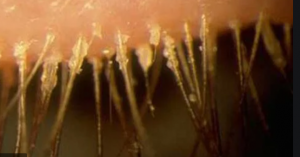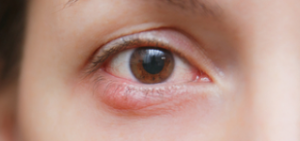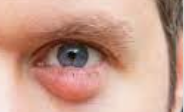Blepharochalasis, or floppy eyelids, impacts the lives of over 200,000 people in the U.S.
Blepharochalisis, also known as Floppy Eyelid Syndrome, is a condition that causes edema – excess fluid buildup – in the eyelids on a regular basis.
Floppy eyelids
Floppy eyelids resulting from the buildup of fluid, cause the eyelid to swell briefly and, after multiple episodes, can become stretched, wrinkled, and discolored, making it look as if you have a floppy eyelid.
What causes floppy eyelids?
Blepharochalasis is a rare condition affecting the eyelids, with no known cause, though genetics seems to be a major risk factor.
There are certain possible triggers associated with the condition, including:
- Fever
- Hormonal changes
- Upper respiratory tract infections
- Eyelid trauma from injury or illness
- Immunoglobulin A (IgA) deposits in eyelid skin
- Loss of or decrease in elastic fibers in the eyelid tissue
- Eyelid inflammation as a result of environmental factors – bug bites, wind exposure or allergies
- Eyelid inflammation as a result of behavioral factors – fatigue, crying or emotional stress
SEE RELATED: Eyelid Conditions
If you notice any of these signs or symptoms below, contact an eye doctor near you.
Signs and symptoms of floppy eyelids
Blepharochalasis manifests externally as swelling, with fluid accumulating in and around the eyelid tissues.
The afflicted skin does not leave an indentation when poked, called non-pitting edema.
Recurrent periods of exacerbation followed by remission can wear down the skin of the eyelids, changing their appearance.
Blepharochalasis can cause the following signs and symptoms:
- Absence of pain – This type of swelling of the eyelid isn’t painful, even though excess fluid is trapped in the tissues and cannot drain properly.
- Bagginess – Eyelid skin rapidly loses its shape and efficiency as a result of repetitive stretching, resulting in extra skin folds.
- Discolored and/or spider veins – Over time as the edema attacks re-occur, eyelid pigmentation can acquire bronze-colored or reddish-brown deposits as well as visible thread-like red lines.
- Eye irritations – Over time, the lower eyelids can fold inward, causing eyelashes to rub against the eyeball, or outward, affecting tear drainage.
- Obscured vision – The swelling might cause upper eyelids to feel “heavy” and lower eyelids to become unnaturally positioned, obstructing vision. Furthermore, the lax skin that develops as a result of repeated episodes can cause upper eyelids to droop down over the edge of the eye, reducing or obstructing visual fields.
- Thin and wrinkled skin – The outcome of multiple edema attacks can leave eyelid skin stretched.
Treatment of blepharochalasis
Blepharochalasis can’t be prevented or cured. However, it can be treated by blepharoplasty, a type of surgery that repairs droopy eyelids.
Treatment may involve removing excess skin, muscle and fat. The surgery can help to alleviate or eliminate functional and cosmetic difficulties caused by edema attacks.
As with all eye conditions, early diagnosis and treatment are the best courses of action.
LEARN MORE: Eyelid Conditions
If you notice floppy eyelids, schedule an appointment with an eye doctor near you, who can diagnose and treat your floppy eyElids.









